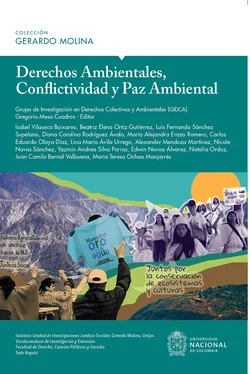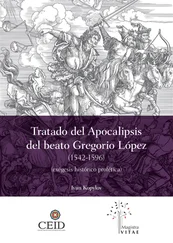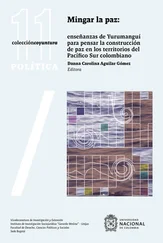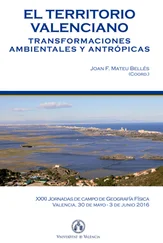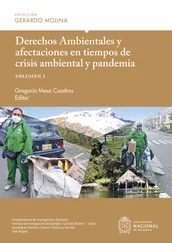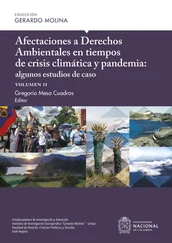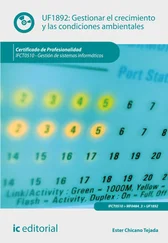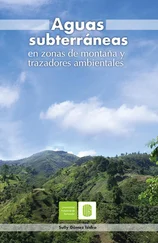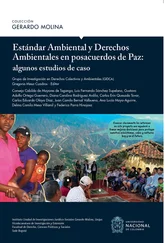Conceptualization, reasons, and arguments
As mentioned before, the environmental conflict is the result of the inadequate appropriation of nature by a few human beings. A pertinent conceptualization should start by specifying what they are and why there are conflicts that we call environmental (Mesa Cuadros, 2015a).
The majority of the environmental problems, such as climate change, desertification, exaggerated and widespread contamination of water, soil and atmosphere, the unlimited extraction of the various elements of nature and the intensive reduction of biological diversity, are the result of these inadequate and illegitimate ways of using and appropriating nature. Therefore, peoples, societies and communities affected by it must organize, demand and claim a different use of nature and demand respect for their traditional practices and customs, different from the way modern capitalist society has established how the environment can and should be used and appropriated.
These juridical forms of use, access and modern appropriation of Nature correspond to liberal or modern theories of law that start from the idea of the unlimited human capacity to access nature and that any barrier (natural or artificial) can be transformed by a theory of law that justifies the appropriation. In history, appropriation could be justified by the right of conquest and war (Ginés de Sepúlveda, 1941); by civilizations against barbarism and exploitation against non-use (Locke, 1690; Montesquieu, 1906), the appropriation of common goods in the English forest fence (16th century) or the new tragedy of the commons by Hardin (1968). In the twentieth century, appropriation also affected plant patents, animals and humans regarding transgenesis or cloning. In recent years, laws of appropriation have affected the radical transformation of life through the nanotechnology of synthetic biology. The “sustainable development” in Rio (United Nations, 1992) or “green economy” in Rio+20 (United Nations, 2012) are the main ways in which capitalism has reoriented its way of speaking about “going green” or “dressing green”, and what should or shouldn’t be considered “green” or consevationalist.
We must remember that environmental conflicts are part of the set of elements that manifest themselves from the tremendous global crises and the injustices of re-distribution on the elements or components of the environment. These injustices originate in the absence of equity in generational terms and with other beings of nature, evidencing not only the type of inequalities linked to the distribution of environmental and natural goods, but also those loads of pollution, deterioration, degradation, displacements and ecosystemic and social damages from which all kinds of demands emerge in different sectors of the population.
Environmental problems are impossible to deny today. Pollution, the destruction of biodiversity, climate change, the gradual disappearance of tropical forests, increased greenhouse gas emissions, acid rain, deforestation, among others, are phenomena that we hear talk daily, besides being problems that demand our attention together with the early implementation of actions aiming to reverse them.
It is for this reason that the primary concern of “political ecology”, as Gorz (1994) points out, has to do with the generation of a balance between human needs and the normative elements that establish the limits to actions and behaviors towards nature since the participatory and democratic perspective.
Within the focus of political ecology, professor Martínez (2002) speaks of “ecological re-distributive conflicts”. He understands by ecological distribution the various social, spatial and temporal patterns of access to the obtainable benefits from natural resources and services provided by the environment as a life support system. This way, ecological distribution links the processes of nature extraction with the growth of the metabolism of industrialized societies that consume more and more natural goods and energy because of asymmetries or social, spatial or temporal inequalities and the reduction of natural resources as well as the increase of pollution loads.
We are of the idea that environmental conflict essentially has to do with disputes between societies and States, on access, extraction, use, appropriation, transformation, production, control, commerce, consumption, destruction, pollution and waste the elements of the environment (natural and cultural). However, reality is that it has more to do with several or many human beings pretending to appropriate the elements that belong to other human groups and communities, generating reactions from others to guarantee their care and access, under other legal norms in which their cultural forms have been previously established (Mesa Cuadros, 2015b).
Following Escobar (2011), these disputes over defense and environmental protection occur mainly because for many communities in ecosystems and their cultural practices is their direct source of subsistence. Such conflicts exist in the context of different economies, cultures and forms of knowledge, along with ecosystems in which local societies engage in struggles against translocal forces to defend their territoriality.
This is because, with the current advances of globalized and transnational capitalism, the pressures to intensify the extraction of environmental goods have been increased and eliminate or erode the juridical limits that societies had established for access to nature. However, as these pressures increase, social resistance also increases, especially from traditional and local community sectors (rural and urban), all of which is reflected in the existence of unresolved environmental problems and conflicts, on the occasion of misappropriation or unjustified of Nature by the new actors in those territories and cultures.
As Inglehart (1977) and other authors point out, some of the keys to defining and understanding the emergence of ecological conflicts in European and North American countries are found in the increasing competition and scarcity of natural resources in the South and the emergence of ecological values in the North. There, various actors are in dispute for controlling and accessing scarce resources along with the change of values in contemporary societies, which are more focused on ideas of self-realization and participation (i.e., post-materialism), than in exclusive concerns of economic security (materialism).
However, we prefer the expression “environmental conflicts” rather than the expression “ecological conflicts”, as we consider the first expression to be more comprehensive and inclusive, by understanding within its analysis the natural, cultural, and spiritual ecosystemic aspects. It emphasizes the different relations between cultures, nature and other societies, and not only in the relations of a society with the ecosystems.
As said earlier, from this conceptualization it is argued that environmental conflicts arise from unjustified appropriations of the environment or violating the rights of some, many or all in a society, by a few. Therefore, environmental conflicts involve, above all, the interests of all subjects of law, not only human beings, but also non-human beings such as forests, mountains, rivers or wild animals.
Just as environmental conflict can be conceptualized in different ways, it can also be categorized. Martínez’s (2008) classification of this type of conflict seems pertinent, since it considers the different points in the production chain. For example, in the areas of material extraction and energy (i.e. mining, hydrocarbons, or biopiracy,), manufacturing and transportation processes (oil spills, waterways) or final disposal (such as generation of waste and pollution by toxic waste like fumigations to illicit crops, which is evident in the Colombian case because of the failed international fight against drugs).
Читать дальше
